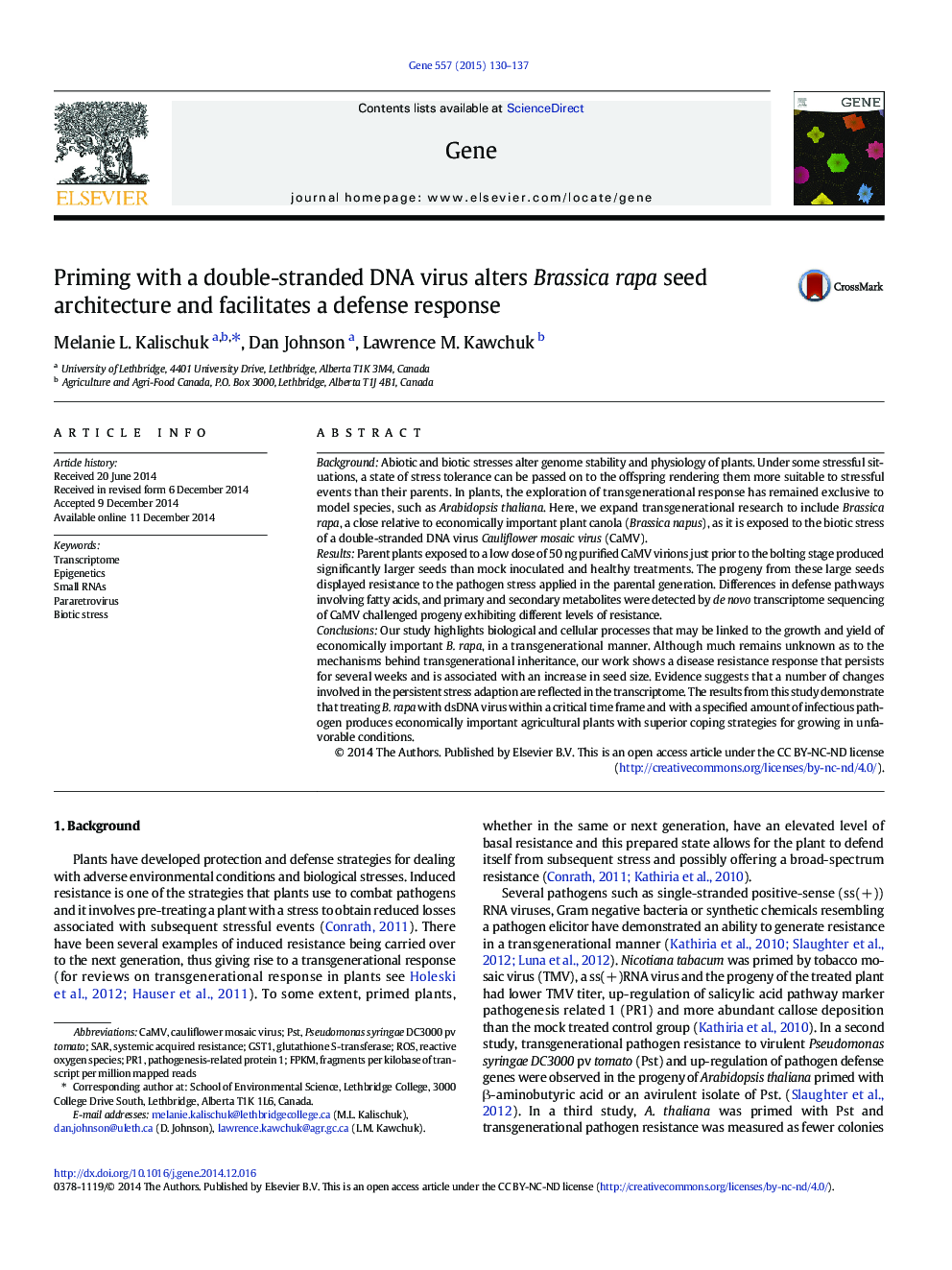| کد مقاله | کد نشریه | سال انتشار | مقاله انگلیسی | نسخه تمام متن |
|---|---|---|---|---|
| 5905515 | 1159904 | 2015 | 8 صفحه PDF | دانلود رایگان |

- Transgenerational inheritance of disease resistance and seed composition in Brassica species.
- A transgenerational effect was detected following exposure to biotic stress.
- The treatment was 50Â ng of CaMV applied four weeks after germination.
- Progeny grown from larger seed were resistant to cauliflower mosaic virus.
- Expression profile differences were detected between resistant and susceptible plants.
BackgroundAbiotic and biotic stresses alter genome stability and physiology of plants. Under some stressful situations, a state of stress tolerance can be passed on to the offspring rendering them more suitable to stressful events than their parents. In plants, the exploration of transgenerational response has remained exclusive to model species, such as Arabidopsis thaliana. Here, we expand transgenerational research to include Brassica rapa, a close relative to economically important plant canola (Brassica napus), as it is exposed to the biotic stress of a double-stranded DNA virus Cauliflower mosaic virus (CaMV).ResultsParent plants exposed to a low dose of 50Â ng purified CaMV virions just prior to the bolting stage produced significantly larger seeds than mock inoculated and healthy treatments. The progeny from these large seeds displayed resistance to the pathogen stress applied in the parental generation. Differences in defense pathways involving fatty acids, and primary and secondary metabolites were detected by de novo transcriptome sequencing of CaMV challenged progeny exhibiting different levels of resistance.ConclusionsOur study highlights biological and cellular processes that may be linked to the growth and yield of economically important B. rapa, in a transgenerational manner. Although much remains unknown as to the mechanisms behind transgenerational inheritance, our work shows a disease resistance response that persists for several weeks and is associated with an increase in seed size. Evidence suggests that a number of changes involved in the persistent stress adaption are reflected in the transcriptome. The results from this study demonstrate that treating B. rapa with dsDNA virus within a critical time frame and with a specified amount of infectious pathogen produces economically important agricultural plants with superior coping strategies for growing in unfavorable conditions.
Journal: Gene - Volume 557, Issue 2, 25 February 2015, Pages 130-137